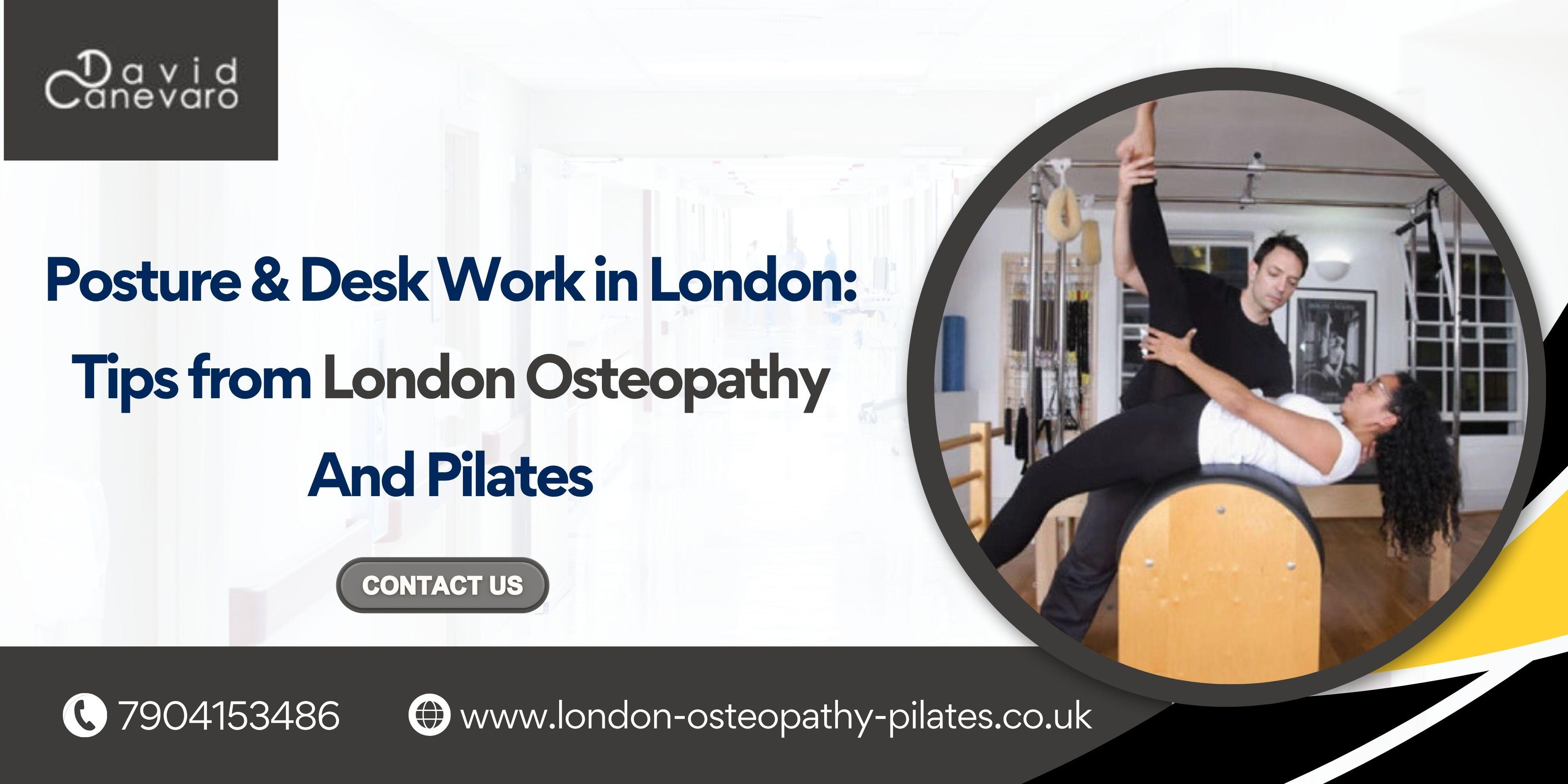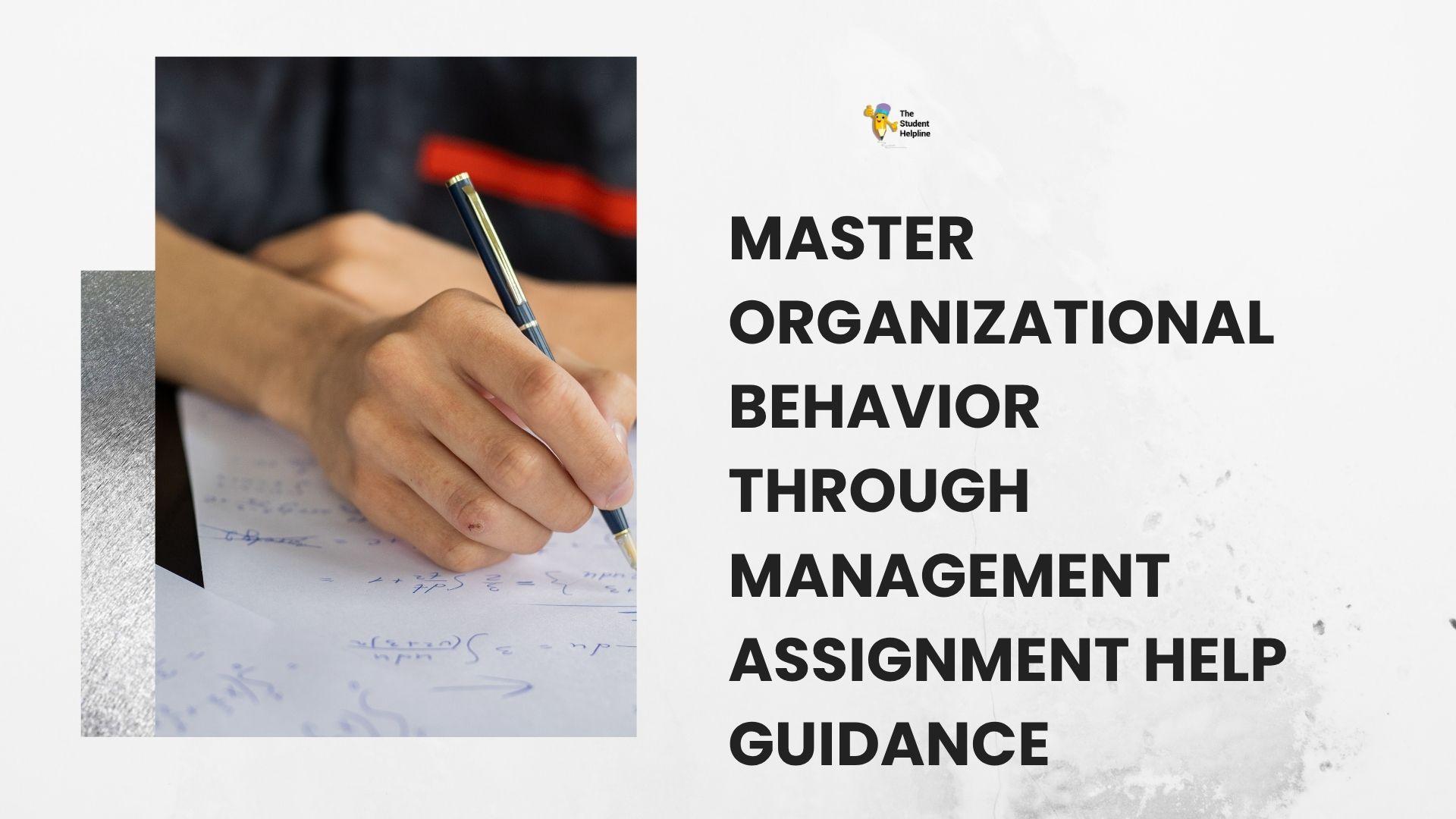Posture & Desk Work in London: Tips from London Osteopathy And Pilates

In today’s digital world, many of us spend hours each day leaning over laptops, staring at multiple screens, and trying to get through tasks seated at our desks. In London’s busy office environment, this is especially true. At London Osteopathy And Pilates, we believe good posture is not just a “nice to have” — it’s foundational to long-term health, productivity, and wellbeing.
In this article, we’ll share evidence‑based advice, clinical insights, and actionable tips for desk workers in London (or anywhere) to protect posture, reduce pain, and cultivate strong bodies for the long haul.
Why Posture Matters for Desk Workers in London
The Rise of Sedentary Lifestyles in Office-Based Roles
Over the last decade, more jobs have shifted to desk-based, computer-centred work. Many employees in Central London and greater London spend upwards of 6–8 hours seated each day, often with minimal breaks. This shift means our bodies are frequently held in static positions, with reduced movement or variation. The spine and soft tissues (muscles, fascia, ligaments) are not built to be rigid for hours on end — over time, this can lead to compensation, stiffness, and chronic pain.
Health Risks Linked to Poor Posture at the Desk
Poor posture at work can contribute to a wide range of issues, including:
-
Neck and shoulder tension — forward head posture, slouched shoulders
-
Upper back discomfort and stiffness
-
Lower back pain, disc strain, lumbar fatigue
-
Headaches and tension headaches
-
Repetitive strain injuries (RSI) — e.g. in wrists, forearms, elbows
-
Reduced mobility and flexibility over time
-
Fatigue and reduced circulation — static posture limits movement and blood flow
Clinics across London regularly see patients whose primary complaints — back pain, neck pain, headaches — trace back to prolonged desk usage and suboptimal setups.
How London Osteopathy and Pilates Addresses These Challenges
At London Osteopathy And Pilates, we blend evidence‑based osteopathic care with Pilates and movement strategies tailored for desk workers. Our approach is not a quick fix — it targets root causes, supports long‑term posture resilience, and empowers clients to maintain mobility and strength in their day-to-day life.
We integrate:
-
Ergonomic assessment and adjustment — to reduce postural strain at the source
-
Hands-on osteopathy techniques — to relieve tension, restore alignment, mobilise joints
-
Pilates-based movement prescription — to strengthen core, improve mobility, reinforce posture
-
Practical movement patterns & break strategies — to interrupt sedentary stress
This combined model sets us apart in Central London osteopathy and positions us as a go-to “London Osteopathy + Pilates” clinic for desk workers.
Workplace Ergonomics: Setting Up Your Desk the Right Way
Your desk setup is the frontline defence against posture-related injury. Even the best osteopathy or Pilates plan will struggle if daily mechanics remain hostile.
Optimal Screen Placement
-
Position your monitor so that the top of the screen is at or just below eye level. You should glance straight ahead, not up or down.
-
Keep the screen at a comfortable distance — roughly 30 inches (≈ 75 cm) is a good baseline, though this may vary with your eyesight and monitor size.
-
If you use a laptop, use a stand plus external keyboard and mouse to raise the screen to eye height.
Correct screen placement reduces the tendency to crane the neck forward (common “tech neck” posture).
Chair Posture and Seating Position
-
Sit with your feet flat on the floor; if they don’t reach, use a footrest.
-
Ensure your knees are approximately at 90° or slightly more, with thighs parallel (or slightly declined) to the floor.
-
Adjust the chair height so that your arms rest naturally at 90° at the elbow when typing.
-
Your chair should provide good lumbar support so that the lower spine maintains its natural inward curve — avoid slouching.
-
Align your body so you face the screen directly; avoid twisting or rotating your torso repeatedly.
Proper Keyboard and Mouse Position
-
Use an external keyboard and mouse.
-
Keep forearms parallel to the ground or slightly declined, forming about a 90°–100° angle at the elbow.
-
Wrists should remain neutral (not flexed or extended) while typing or mousing.
-
Place the mouse close so you don’t have to overreach or extend your arm outward — this reduces shoulder strain.
Use a Headset for Phone Calls
If you speak on the phone frequently, a headset (wired or wireless) is essential. Holding the phone between your shoulder and ear or twisting the neck for calls stresses neck and shoulder muscles unnecessarily. A headset frees your posture and allows you to maintain neutral alignment.
The Importance of Regular Movement During Your Workday
Even with perfect ergonomics, staying seated for hours is not benign. Movement is a vital counterbalance.
Move Every 30 Minutes
Set a timer or software reminder to stand, stretch, or walk for at least one minute every 30 minutes. Frequent micro-breaks help:
-
Improve circulation
-
Reset posture
-
Reduce stiffness
-
Break up static load
Even brief movement interrupts the cumulative stress on soft tissues.
Desk-Based Stretching Exercises
You can do many gentle stretches right at your desk:
-
Neck rolls / side bends / gentle chin tucks
-
Shoulder shrugs and scapular squeezes
-
Spine twists (seated, turning trunk gently)
-
Upper back extension (hands behind head, gently arching upward)
These help release tension in commonly strained regions such as the neck, shoulders, and upper back.
Stay Active Beyond the Desk
A key principle of our method is to reinforce the body outside work hours. Activities such as gym workouts, sports classes, walking, or cycling help maintain posture-supporting muscles (core, glutes, back). Cultivating strength, mobility and general aerobic fitness complements our osteopathy + Pilates work.
Follow the 20-20-20 Rule for Eye Health
To reduce eye strain (which often leads to forward‑leaning posture), adopt the 20‑20‑20 rule:
Every 20 minutes, look away from your screen at something ~20 feet (≈ 6 meters) away for at least 20 seconds.
This not only gives your eyes rest, but encourages you to momentarily shift focus and posture.
How Osteopathy Helps with Posture and Desk Work Strain
While movement and ergonomics are vital, many desk workers already experience misalignment, tensional build-up, or postural compensation. That’s where osteopathy comes in.
What Does an Osteopath Do for Posture?
A London osteopath is trained to view the body as a connected system — bones, joints, muscles, nerves, fascia all influence one another. For posture, we:
-
Assess alignment from head to pelvis
-
Identify areas of stiffness, asymmetric motion, or compensatory patterning
-
Palpate tissues to find tight, restricted zones
-
Evaluate how your posture, daily habits, and ergonomics contribute
In short: we diagnose the root, not just mask symptoms.
Personalized Postural Assessments
Your first consultation with us involves a full medical and lifestyle history, posture and movement assessment, and physical examination. We may observe how you sit, stand, walk, and how your joints move. This gives insight into underlying drivers of pain and posture deviations.
Manual Therapy Techniques to Relieve Tension
In clinic sessions, we may use a variety of osteopathic techniques, including:
-
Soft tissue massage and myofascial release
-
Joint mobilisation and articulation
-
Gentle manipulation (where appropriate)
-
Muscle energy techniques and stretching
These relieve tension, improve joint mobility, and create space for better alignment.
Long-Term Solutions, Not Just Symptom Relief
Beyond immediate relief, we work with you to correct habits, strengthen underactive muscles, and educate on posture strategies. We offer guidance on ergonomics, movement patterns, and lifestyle tweaks — so you don’t return to the same pain later. This holistic philosophy underpins how we practice Central London osteopathy.
The Benefits of Combining Osteopathy with Clinical Pilates
Many clients wonder: why add Pilates to osteopathy? The answer: synergy. Together, they create a robust posture protection system.
Why Pilates Is Perfect for Desk Workers
Pilates emphasizes core strength, control, and mindful movement. For desk workers, this helps:
-
Stabilise the spine
-
Increase body awareness — detecting slumps, shifts
-
Counteract muscular imbalances (e.g. tight hip flexors, weak glutes)
-
Improve flexibility and mobility
When delivered by clinicians, Pilates is safe and highly targeted.
Tailored Pilates Programs at London Osteopathy and Pilates
At our clinic, Pilates classes are not generic. Our instructors (who are often osteopath-trained) design individualised plans based on your posture, movement patterns, weaknesses, and goals. That ensures your sessions are effective, safe, and relevant.
Improving Core Stability to Support the Spine
The “core” is more than abs — it includes deep abdominal muscles, back muscles, pelvic floor, diaphragm. Developing strength in this network stabilizes the spine under load, reduces excessive strain on vertebrae, and supports upright posture.
Enhancing Mobility and Flexibility
Desk work often leads to stiffness in hips, hamstrings, thoracic spine, shoulders. Regular Pilates improves range of motion, lengthens tight muscles, and restores joint freedom — reducing compensation patterns.
Long-Term Impact on Postural Health
With consistent Pilates practice, clients develop movement awareness — noticing when they slump or shift. This mindfulness, ingrained over time, serves as a self‑corrective mechanism. The posture improvements become sustainable and resilient.
Integrating Healthy Movement Into Your Workday
To make your desk work less harmful, embed movement habits sensitively into your workflow.
Tips for Incorporating Micro-Movements
-
Stand while on phone calls
-
Walk during virtual meetings
-
Use a sit-stand desk or adjustable workstation
-
Set movement alarms or apps
-
Stretch when transitioning between tasks
Stretching Routines for Busy Professionals
Here’s a quick 5-minute routine you can do right by your desk:
-
Neck side bends, chin tucks (30 sec each side)
-
Shoulder rolls forward/backward (10 each)
-
Scapular squeezes (hold 5 sec, 10 reps)
-
Seated spinal twist (each side)
-
Forward fold (to stretch hamstrings)
This helps reset tension and posture mid-work.
Tracking Your Activity and Posture
-
Use posture trackers or wearable devices
-
Apps that prompt you to stand or stretch
-
Take note of how your body feels (tension, stiffness) and adjust accordingly
-
Record sessions or symptoms to review with your osteopath or instructor
Tracking increases awareness and keeps you accountable.
Creating a Desk-Friendly Exercise Routine
Even with movement breaks, a structured exercise plan supports long-term posture.
Exercises You Can Do At Your Desk
-
Seated spinal twist (rotate trunk gently)
-
Shoulder blade squeezes
-
Neck extension with chin tuck
-
Seated hip flexor stretch (if space allows)
-
Leg lifts or glute squeezes
These small movements combat stiffness and promote engagement of supportive muscles.
Evening Exercises to Reverse Desk Fatigue
After a day of sitting, your spine benefits from gentle mobilization:
-
Cat-cow stretches
-
Child’s Pose
-
Supine hamstring stretch
-
Bridge or glute activation
-
Supine spinal twists
These help decompress the spine and release tight muscles.
When to Seek Professional Help
While many posture issues can be managed proactively, see an osteopath if:
-
Pain persists beyond a week or two
-
Symptoms (e.g. tingling, numbness, sharp pain) appear
-
Mobility is restricted (you cannot move fully)
-
You have recurring flare-ups
An osteopath can diagnose deeper issues and plan targeted care.
Why Choose London Osteopathy and Pilates?
What sets us apart in the dense landscape of London osteopaths and Pilates providers?
Expert-Led, Patient-Centred Approach
We maintain a multidisciplinary team of registered osteopaths and certified Pilates instructors (many instructors are osteopaths themselves). We treat you, not just your posture. The client’s goals, comfort, and feedback drive our programs.
Focus on Long-Term Health and Prevention
We don't merely "repair" you — we teach, enable, and avert. You’ll leave every session with practical insights, movement strategies, and posture habits to maintain your gains. This alignment of treatment + prevention is core to the London Osteopathy brand.
Convenient Locations and Flexible Appointments in London
We operate in Central London osteopathy clinics with easy access from the city’s hubs. We understand busy professionals’ schedules, so we offer early morning, evening and weekend slots. Whether you're near Liverpool Street, Old Street, Hoxton or Beckenham, we aim to be accessible.
We also offer virtual consultations and remote Pilates programs, so location is less of a barrier.
Summary: Your Desk Doesn’t Have to Be a Health Hazard
Quick Checklist for Better Posture and Desk Health
✅ Ergonomic workstation (screen, chair, input devices)
✅ Regular breaks and stretches
✅ Short daily movement habits
✅ Osteopathic assessment when needed
✅ Clinical Pilates or core strength work
✅ Long-term posture awareness
Working at a desk in London doesn’t have to compromise your body. With the right mix of thoughtful ergonomics, movement, and clinical support, you can maintain posture, strength, and vitality — even in a busy city environment.
If you’d like us to prepare a custom posture plan, a desk assessment, or a Pilates routine tailored to your work habits, reach out at London Osteopathy And Pilates — we’d be delighted to help you stay upright, pain-free, and performing at your best.








